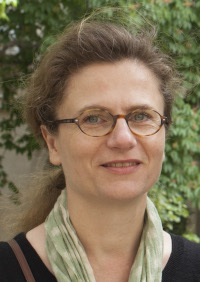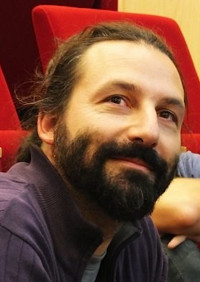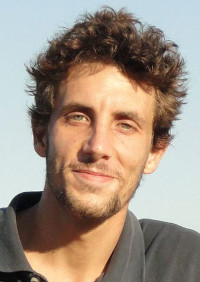Welcome to the archived website of Section 26 of the National Scientific Research Committee (CoNRS) for the mandate 2016–2021. This site contains extra information to those provided by the official website of the section.
This website was under the full responsibility of the members of the section and did not involve neither the CoNRS nor the National Scientific Research Center (CNRS).
Final assessment of the Section 26, mandate 2016–2021. The final assessment for all the sections of the CoNRS is also available at the CNRS website. (Documents written in French.)
2021 Medals: Section 26 researchers in the spotlight


Silver medal of the INSBCatherine Tallon-Baudry – Researcher in Cognitive Neuroscience
Laboratoire de Neurosciences Cognitives et Computationnelles, Inserm U960, Paris
- 1997: PhD in Neuroscience (Université de Lyon 1)
- 1999: Hired at CNRS – Associate researcher
- 2009: Senior researcher at CNRS
- 2015: ERC advanced grant
Catherine Tallon-Baudry is a specialist in the study of subjectivity and body-brain interactions associated with conscious perception.
Her early research focused on the role of oscillatory synchronization in perceptual binding, attention and consciousness from electroencephalographic (EEG) and intracortical recordings in human and non-human primates. She has thus demonstrated that conscious perception and memory storage of visual stimuli are associated with oscillatory activities in the gamma band (> 40 Hz) at the level of visual areas. Among her other influential works, based on experiments in EEG and magnetoencephalography (MEG), Catherine Tallon-Baudry has highlighted a double dissociation between spatial attention and visual awareness, paving the way for a new field of study on the neural bases of subjectivity.
Her most recent work is based on a strong and original hypothesis that signals from internal organs (viscera, heart) contribute to the organization of brain dynamics and to the biological basis of subjectivity. Starting from the observation that the heart and the stomach have a strong reciprocal connectivity with the central nervous system, her research tests the hypothesis that these visceral rhythms contribute to the organization of spontaneous brain activity. She has thus identified two regions (anterior cingulum and lower right parietal lobule) for which the amplitude of the neural response linked to cardiac activity makes it possible to predict whether or not a visual perceptive target is detected.
Her highly original research work has a major impact in the field of Cognitive Neuroscience and opens up new perspectives in the field of body-brain interactions.


Bronze medal of the Section 26Adrien Meguerditchian – Researcher in Comparative Psychology Laboratoire de Psychologie Cognitive, CNRS, Marseille
- 2009: PhD in Cognitive Science (Université de Provence)
- 2014: Hired at CNRS – Associate Researcher
- 2017: Claude Paoletti Prize, INSB CNRS
- 2017: ERC starting grant
Adrien Meguerditchian is a specialist in the study of the gestural origin of speech and its hemispheric specialization.
His research is at the crossroads of Ethology, Language Sciences, Comparative Psychology and Neuroscience. His research focuses on a human/animal comparison of the precursors of language. He explores the gestural origins of speech and its organization. Through a comparative approach, he studies the gestural communication system of non-human primates, its ontogeny, its cognitive, intentional, referential, motor and rhythmic properties, its lateralization and its cerebral bases in order to detect their continuities and discontinuities with certain properties of language and its hemispheric specialization. To do this, for example, he follows baboons on a daily basis, from birth to maturity (4–5 years) and analyzes communication gestures, fine manipulations and vocalizations, taking into account individual variability. To study hemispheric specialization, he uses MRI or near-infrared spectroscopy brain imaging approaches, a cutting-edge technique that he is implementing in this animal.


Bronze medal of the CID 51Antoine Wystrach – Researcher in Cognitive Ethology Centre de Recherches sur la Cognition Animale, CNRS, Toulouse
- 2008: PhD in Cognitive Science[:fr[Doctorat en sciences cognitives (Universités Toulouse 3 / Sydney, Australie)
- 2016: Hired at CNRS – Associate Researcher
- 2015 and 2017: Young research prizes UIETS and SFECA
- 2018: ERC starting grant
Antoine Wystrach is a specialist in the study of visual navigation in ants.
He has adopted a highly integrative approach, at the interface between Ecology and Neuroscience, combining behavioral, field and laboratory experiments, and modelling. His questioning comes from the observation of the body or the behavior of the animal in its natural environment. “How do ants perceive the world through their faceted eyes? How do they find their way back when they pull objects in reverse?” Then he tries to model the functional link between the behavior and its neural mechanism. To answer his questions, he develops new original tools, such as a platform for simulating agents (ants) that navigate visually in reconstructed worlds and a virtual reality system for ants navigating in a world projected by video-projectors on an arbitrary surface (cylinder, sphere, etc).